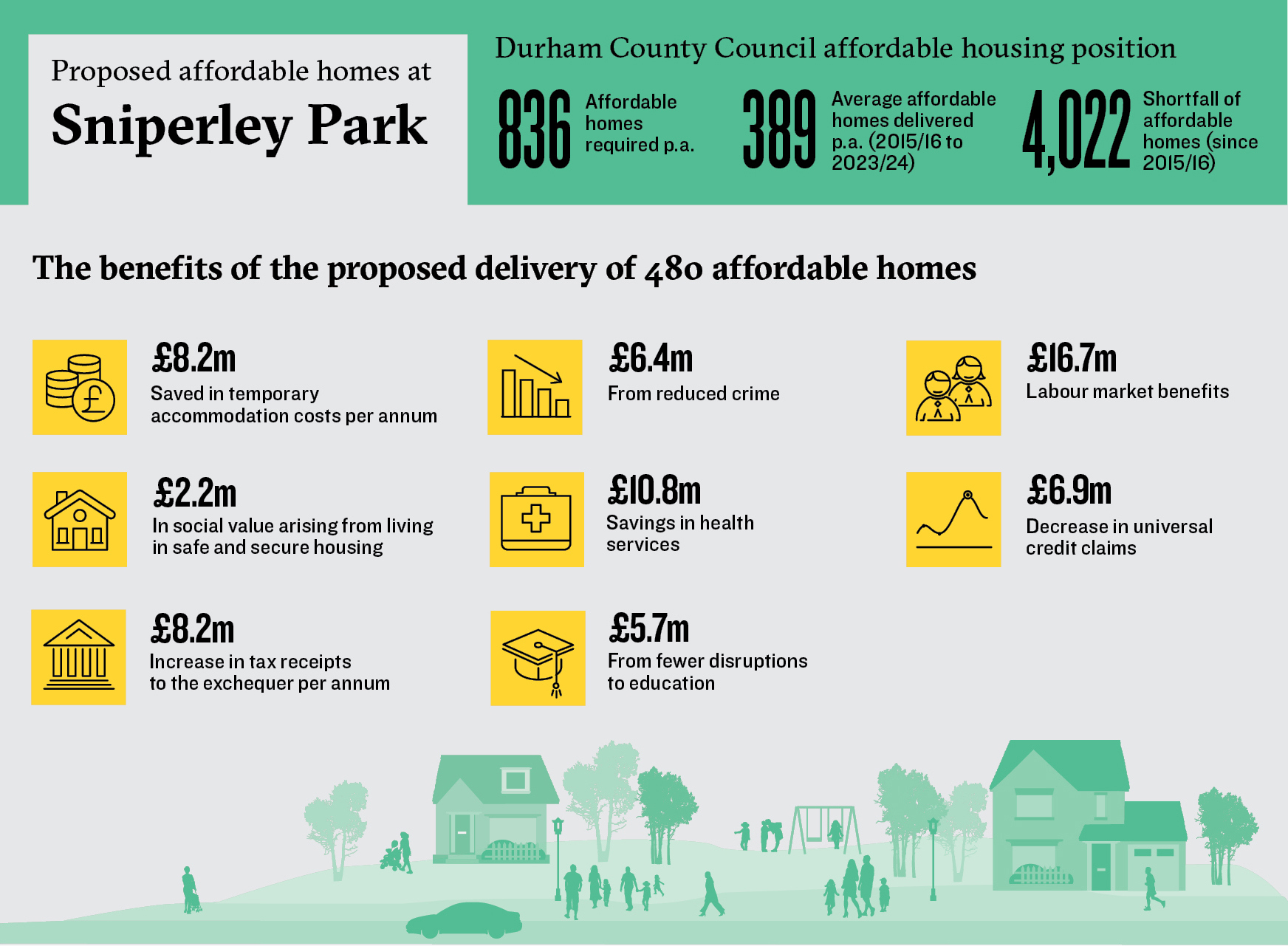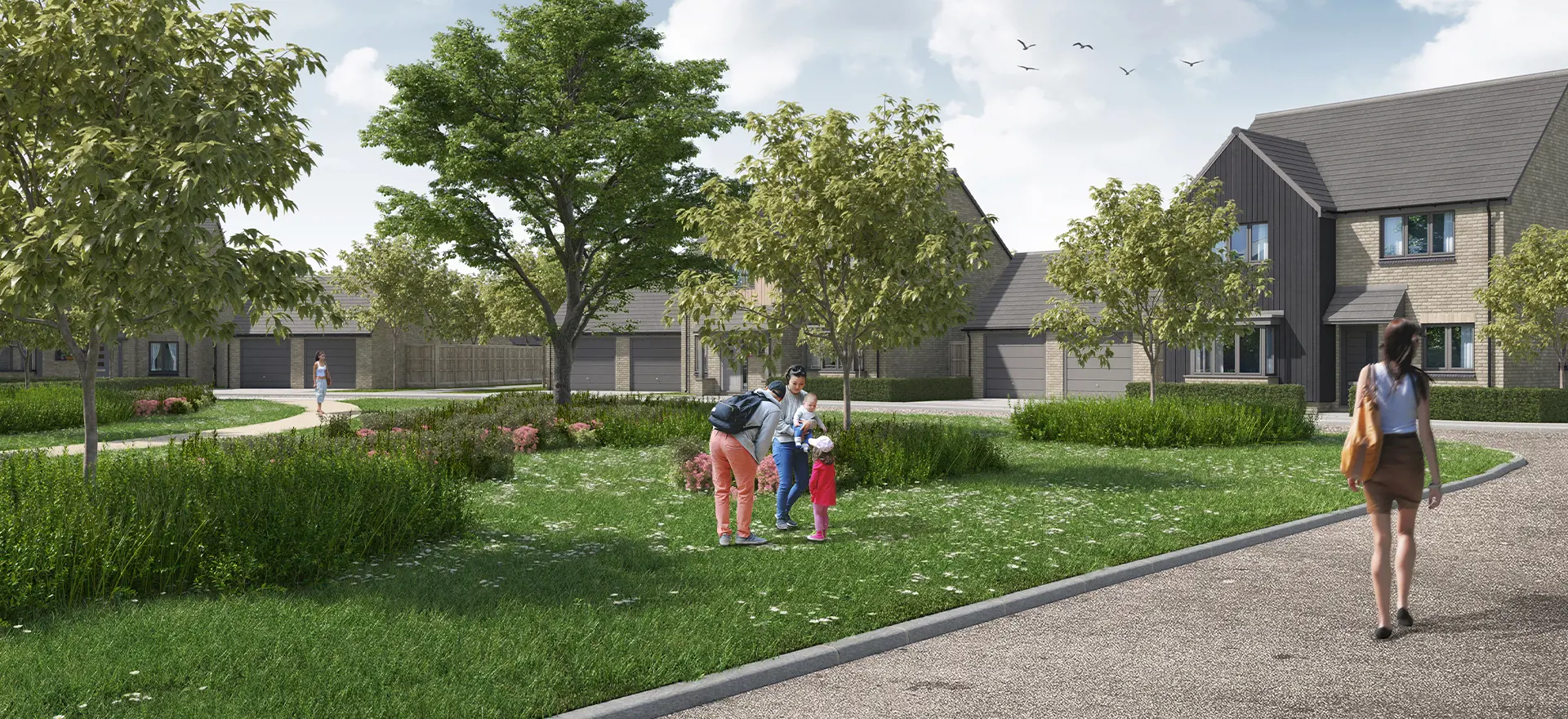For decades, the UK has failed to provide enough affordable housing, leaving millions on waiting lists and living in unsuitable accommodation (there are c.1.29 million households in England
[1], 139,000 in Wales
[2] and 100,000 in Scotland
[3] on housing waiting lists). Such situations create instability in terms of education, employment and social wellbeing. A reliance on temporary accommodation can have adverse physical and mental health implications for residents whilst also adding further pressure to already stretched local government resources.
The need to increase affordable housing delivery is recognised in policy across the UK:
-
The next Labour Government will deliver the biggest boost to affordable, social and council housing for a generation, as supported by their target to deliver of 1.5 million homes over the Labour government term (Angela Rayner, 2023)
-
The estimated annual additional homes are split almost equally between affordable housing (social housing or intermediate) and market housing. This represents an average of approximately 3,500 (48%) affordable homes per year (Future Wales 2040)
-
Scottish Government is committed to delivering 110,000 affordable homes by 2032 (Affordable Housing Supply Programme, Scottish Government)
An implication of the greater emphasis on affordable housing provision being pushed at the national level (across the UK, but particularly England following the election of the Labour Government) is that the weight that this is being afforded in determining planning applications and appeals is increasing. In October 2024, Inspector A. McGlone allowed two appeals for housing in Tamworth and Lichfield
[4] (two applications for the same development which fell across the boundary of two local planning authorities), concluded there is a demonstrable need for housing and that this is “
only greater than the housing registers and a national affordable housing crisis… Therefore, there would be no dis-benefit of providing affordable homes in this location, particularly as an insufficient provision of affordable homes affects people” (para 81).
What is also increasingly recognised is the benefits provided by affordable housing delivery. In reaching their decision on the Tamworth / Lichfield appeal the Inspector noted “being able to live in a good home is a foundation for everyday life. Homes provide stability and offer financial security, help physical and mental health, reduce social mobility and adverse effects on children’s education and development” (para 81).
The same sentiment was shared by Inspector J P Longmuir for a scheme in Southampton that will provide 84 dwellings, 35% of which will be affordable
[5]: “
the affordable housing would also contribute to the social objective, particularly as 35% of the dwellings would be affordable which is a significant proportion. This would help towards the pressing local need and support the wellbeing of the community as a whole” (para 102) (Lichfields emphasis).
Whilst private sector affordable housing providers and local authorities are usually well aware of these benefits, many planning applications fail to articulate the scale of the need for affordable housing or the magnitude of the benefits of its delivery. This means that they can be downplayed in the exercise of planning balance for the application.
Given the significant need to boost housing delivery and the importance of emphasising the case for the provision of affordable housing, Lichfields is pleased to launch Affordable. This new product is designed to identify the need for and benefits of affordable housing delivery. Its release comes just a week after the Chancellor in England announced a £2 billion injection of new grant funding to deliver up to 18,000 new social rent and affordable homes – a timely launch for a product that can be used to provide a robust evidence base to demonstrate the case for such accommodation. Indeed, Affordable could be also used to as part of bids to access some of this newly announced funding.
Affordable builds on our extensive experience in working with both housebuilders and local authorities with regards to affordable housing – both in terms of supporting the case for development and identifying opportunities to maximise the benefits of affordable housing to councils and local communities. The benefits identified are far ranging and include economic benefits for the local authority in respect of savings for temporary accommodation, the NHS in respect of improved health, and residents in respect of improved job opportunities, reduced fear of crime, and living in safe and secure housing. An example infographic is provided below.

Although the most recently published affordability data in England and Wales (released on 24 March 2025) has pointed towards a slight reduction in the housing affordability ratio, this has had no discernible impact on the need for affordable housing. Whereas the England, Wales and Scotland Governments have all set ambitious targets, either for overall housing delivery to increase at a significant rate or for affordable housing to account for a higher proportion of overall delivery, homelessness continues to rise to record levels and social and affordable homes only account for around 16% of the total housing stock in England
[6].
We welcome the fact that some decision makers are now recognising the acute shortfall in affordable housing provision and the acute need to boost supply, and that this has translated into increased weight being given to the provision of affordable housing in planning applications and appeals. However, there is much more that can and should be done to demonstrate the case for affordable housing delivery and the wider benefits it provides. Affordable provides robust evidence that is underpinned by the latest statistics and presented with a clarity in a way that allows decision makers to focus on the challenge that exists and to understand the extent to which individual developments can make a tangible difference to the local need for affordable housing, whilst also delivering a wide range of social-economic benefits to the local community.
Footnotes
[1] Governement UK: Social housing lettings in England, tenants: April 2022 to March 2023
[2] FOI Requests from BBC, later published by Shelter Cymru
[3] Scottish Government: Scottish Household Survey 2023
[4] Address: Land north of Browns Lane, Tamworth, Staffordshire Appeal refs:efs.: APP/K3145/W/24/3340089 & APP/Z3445/W/24/3340094 Decision date: 4 October 2024
[5] Address: Land to the rear of former St Mary’s College, Midanbury Lane, Southampton, Hampshire, SO18 4HE Appeal ref.: APP/D1780/W/24/3347358 Decision date: 19 February 2025
[6] UK Parliment: Affordable housing in England
Header image credit: Pillar Land Securities Ltd





